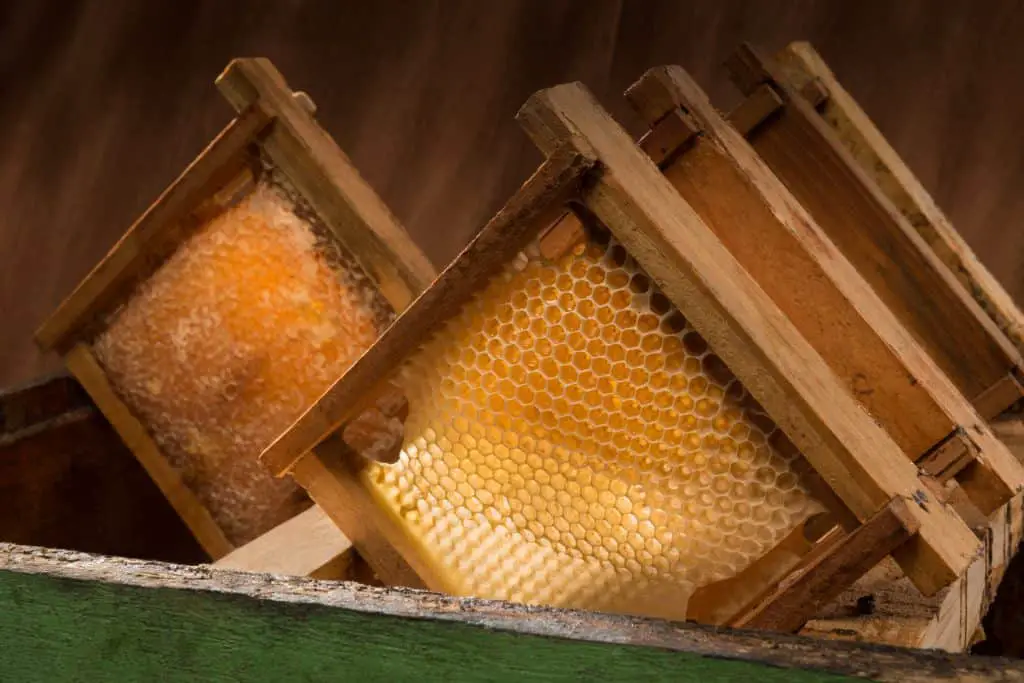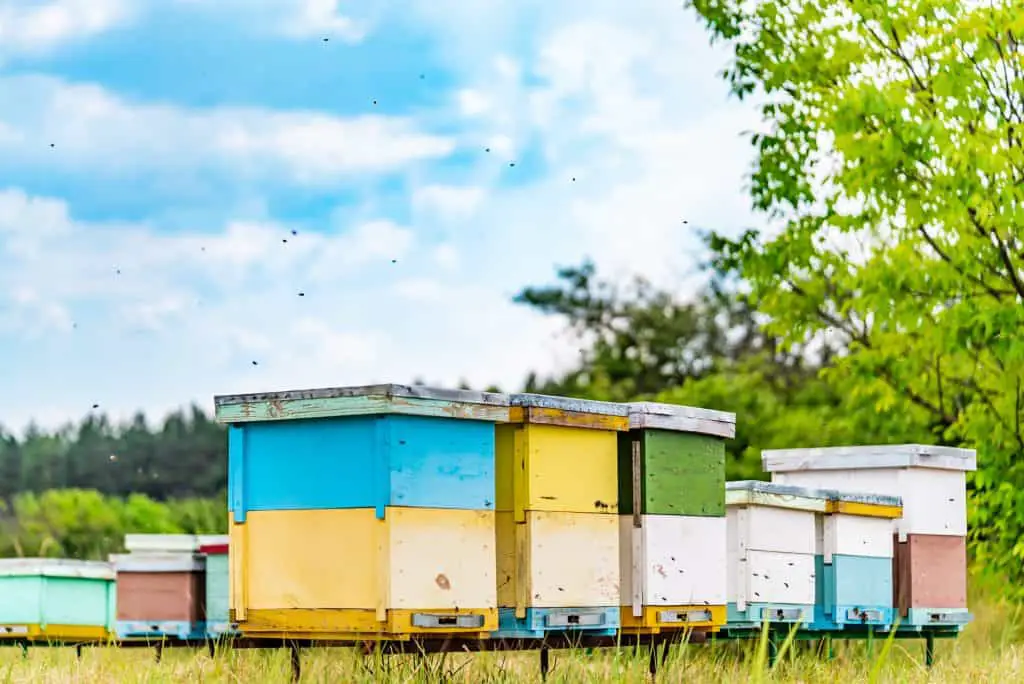Determining the price of honey is a slightly tricky business, as there are many types of honey and many ways to buy honey. Depending on whether you’re buying wholesale or retail, the price of honey will vary. Additionally, depending on if you are simply purchasing your average grocery store honey or the more expensive Manuka honey, the price will vary even further.
The USDA reported in 2022 that honey prices were around $6.00 for wholesale and $9.50 for retail per pound. This means that if you buy honey in large amounts, it will be cheaper than purchasing just one bottle at the grocery store. However, it only makes sense to buy bulk honey if you will use it all, as freezing and storing large amounts of honey can be a bit difficult.
You can read the full 2022 USDA report on Honey here.
What Determines the Price of Honey?

There are several factors in determining the price of honey, including basic economic factors such as supply and demand, as well as location and the type of honey you are selling or buying. Whether you are trying to figure out how much honey will cost you or attempting to determine how much you should sell your honey for, this section will answer your questions.
Supply and Demand
The first and most important factor in the price of honey is simply the supply and demand for the honey. If there are large amounts of honey available on the market and nobody to purchase it, the prices will become lower to entice people into buying it. Conversely, if honey is in limited supply and many people really want to buy honey, the price of honey will increase.
Location
Your location also has an impact on honey prices, partly because it is related to supply and demand. If you are in an area where there are many beekeepers and not many customers, the supply for honey will be high and the demand will be low, meaning that honey will be cheaper than in other areas. Similarly, if your area sports just a few beekeepers and many customers, the supply will be low and the demand will be high, driving honey prices up. Rural areas where there are many bee farmers and not many people to purchase honey see the lowest local honey prices.
Many beekeepers offset the impacts of their rural location by traveling to local cities to sell their honey. Many cities have farmers’ markets that feature nearby farmers, and this is a great way to get more money for your honey. Additionally, some beekeepers sell their honey online, which is another way to charge a bit more for your honey.
Type of Honey
What type of honey you are selling or buying also impacts the price of the honey. Raw, organic honey tends to sell for more than your typical pasteurized grocery store honey because of its health benefits. Fancy Manuka honey sells for even more, again due to its increased health benefits.
If you are looking to be able to charge more for your honey, make sure that you are producing raw, organic honey and you are marketing it as such. Ensuring that you are labeling and organizing your honey by what flowers it was made from can also help you gain the most income from your honey, as people love to know where their honey came from.
Cost of Production
The cost of production is another factor in the price of honey. Beekeepers with small apiaries that do not produce large amounts of honey have a higher overhead cost relative to the product created, forcing them to charge more for their products. The larger, more commercial apiaries are able to charge less for their honey because their overhead cost per jar of honey tends to be lower.
But there is also often specific demand for honey from small, local apiaries because of trends that push organic and local food, meaning that you do not need to be discouraged if you are the owner of a smaller apiary. People will still be interested in your honey if it is marketed effectively.
What is the Average Price of Honey in the United States?
The USDA reported in early 2022 that honey prices were around $6.00 for wholesale and $9.50 for retail per pound. These are the most current average prices reported for honey in the United States. The price of honey can vary widely based on the quality of the honey and the supply and demand for the honey.
What Makes Some Honey More Expensive than Others?
Supply and demand oversee the price of honey for the most part, but there are many factors that affect demand for honey which we’ll go over in this section. Some factors include whether the honey is raw or organic, what type of flowers the honey comes from, the health benefits of the honey, and more.
Raw and Organic Honey
Raw, organic honey is typically more expensive than heavily pasteurized and filtered honey. This is because pasteurization and filtering remove many of the essential health benefits that honey contains. Raw honey has natural antioxidant and antibacterial honey, making it a great health supplement and even good for healing wounds. Heavily processed honey loses many of its health benefits in pasteurization, which occurs when the honey is heated to high temperatures to kill living organisms within the honey.
Honey from Specific Flowers
Depending on current trends, honey from specific types of flower may be more expensive than other honey. For example, if people are very interested in clover honey, they are more likely to spend more money on clover honey than other types of honey. This all depends on what current trends are saying about honey and what people think about different types of honey.
Health Benefits of Honey
Finally, some types of honey are touted as having more health benefits than other types of honey. For example, Manuka honey is supposedly especially healthy and good for healing wounds and for skin care use. So Manuka honey tends to be more expensive than other types of honey because people value it for its health benefits.
What is the Most Expensive Honey?
According to the Guinness World Records website, the most expensive honey ever sold was Centauri honey from Turkey. This honey was extracted from deep caves just above sea level, and can only be harvested in amounts of about fifteen kilograms per year. It sold for about $5,250 per pound in 2021, which is incredibly expensive for honey. The reason it is so expensive is because of the way it is extracted and how small the supply of this honey is.
What is the Cheapest Honey?
The cheapest honey is typically pasteurized, highly processed honey that you can find in any grocery store. You can buy even cheaper if you purchase honey in bulk because bulk prices are much lower per pound than retail prices. It is important to note that purchasing cheap honey is not recommended, as the cheapest honey is typically also the lowest quality honey.
How Do You Sell Honey to Make a Profit?

The most important part of selling honey for profit is keeping overhead costs low and marketing your honey effectively, selling it in various ways to maximize profit. Labor is a large part of the cost of honey production, so the more work you can do yourself, the better. Additionally, having more honey bee hives can decrease your overhead costs overall, meaning that a larger apiary can mean a larger profit.
Reduce Overhead Costs
Much of the overhead cost of beekeeping and honey harvesting is labor, meaning that the more labor you can do yourself, the better. Visiting your hives, checking for parasites, feeding your bees, and harvesting honey can be done fairly easily by one person without hiring another person. This is the first and possibly most important way to cut costs while keeping bees.
Additionally, checking regularly for parasites and treating them early whenever Varroa mites or Tracheal mites are found will help reduce the costs of miticides. It is best to check for parasites at least three times a year, in the spring, early summer, and fall. This will allow you to treat them early and spend less money on miticides than if you find a parasitic invasion later on. Also, if the levels of parasites are fairly low, you can try natural methods such as sugar dusting, which are cheaper than miticides.
Finally, feeding your bees homemade sugar water rather than purchasing special bee food will work just as well for them and be much cheaper. You can simply mix regular white cane sugar with hot water and let it dissolve, and then feed to your bees in a commercial bee feeder or one that you can make yourself.
Market Honey Effectively
Another part of selling honey to make a profit is simply effective marketing. Many people fail to market their honey well, and struggle to sell it as a result. Beautiful packaging that highlights what makes your honey special will encourage people to purchase it. Make sure that if your honey is raw, organic honey, you include that on your label. Or if it is made from a special type of flower, add that to your label as well.
It’s also important to run social media for your farm and even newspaper ads, especially if you attend farmers’ markets or have a farm stand of your own. You can advertise where your honey will be available for purchase on Facebook or Instagram.
In fact, you can even sell your honey online! Websites like Etsy.com allow you to sell your products for a small fee, which can be a great way for a small apiarist to market their honey. You can even build your own website and create your own online store if you are tech savvy.
Expand Apiary
Finally, one way to increase your profit is to expand your apiary so that you can have more products to sell and a lower overhead cost. More hives means more honey, but not that much extra work. It does not take much more time to extract honey from ten hives than it does to extract it from five hives, but the different in income is fairly large. This is one of the best ways to increase your profit from your apiary.

